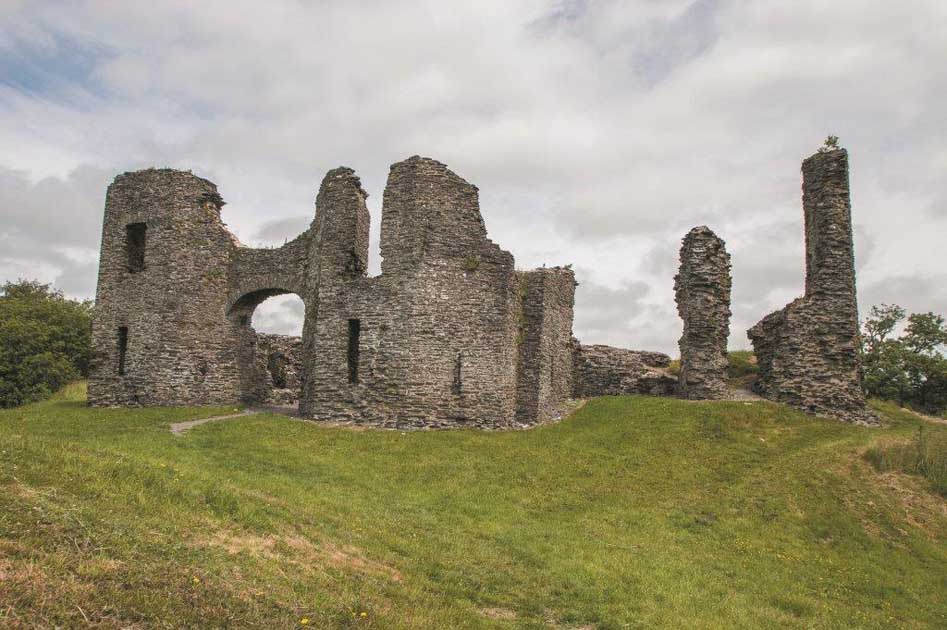Newcastle Emlyn Castle

Newcastle Emlyn Castle Details
Newcastle Emlyn Castle, ruins of C13 promontory castle of the princes of Deheubarth
- Closest To: Newcastle Emlyn
- Access: Free Public Access
- Grid Reference: SN312407
Newcastle Emlyn Castle is the substantial ruin of a stone castle built for the princes of Deheubarth in the mid 13th century, and then maintained by the English Crown along with a small borough. It was substantially upgraded in the early 14th century, and then gradually declined in importance. In about 1500 it was restored as a grand mansion, and last saw action in the mid 17th century when an earthwork artillery bastion was raised in front of the old gatehouse. It is maintained by the local authority and is open at all times as a public park.
The “New Castle” presumably replaced an older castle, and was founded by Maredudd ap Rhys Gryg of Ystrad Tywi, soon after an agreement which saw the cantref divided between him and Walter Marshal, earl of Pembroke, in 1240. The location of the “Old Castle” is unknown, but may have been at Cenarth. Maredudd’s castle was built on a steep sided promontory bounded on three sides by the River Teifi, and in plan was an elongated triangle, defended by a ditch across the promontory, and an outer courtyard, again protected by earthworks. The masonry castle may have had towers facing over the ditches, but evidence for these has been destroyed by the mid 14th century gatehouse that is the most significant survival today. Taking Maredudd’s castle at Dryslwyn as the example, there may have been a round tower-keep on one side that overlooked a simple gate (the north tower of the later gatehouse had a vaulted cellar beneath so is the more likely side), or perhaps a rectangular gatehouse. An outer wall of timber was erected across the front of the outer ward, and enclosed an irregular area below the castle on all other sides, along with buildings like a water mill.
In 1287-88, Rhys ap Maredudd rebelled against the English rule of Edward I, and triggered a massive response which ended in his execution, and sieges of both his main castles. At Newcastle the siege of 1287 was led by Roger Mortimer, whose maintenance of other Welsh castles that he acquired was somewhat minimal, and after a brief reoccupation by Rhys, he lost the castle again in 1288, this time to the royal official Robert de Tibetot. New domestic buildings were installed, including a hall in 1312, but work was sporadic and the new gatehouse was only finished in 1347. The castle was sacked by Owain Glyndwr in 1403, and described as ruined in 1428. Early in the 16th century Sir Rhys ap Thomas acquired Newcastle Emlyn, and renovated the gatehouse and castle into a handsome mansion, inserting the large windows in the towers. The artillery bastion was raised by royalists but this did not stop the capture of the castle in 1644 twice, a final siege by parliamentary forces in 1645 being unsuccessful. This was the last straw, and parliament ordered its demolition.
Become a supporter of my work to access a more detailed history